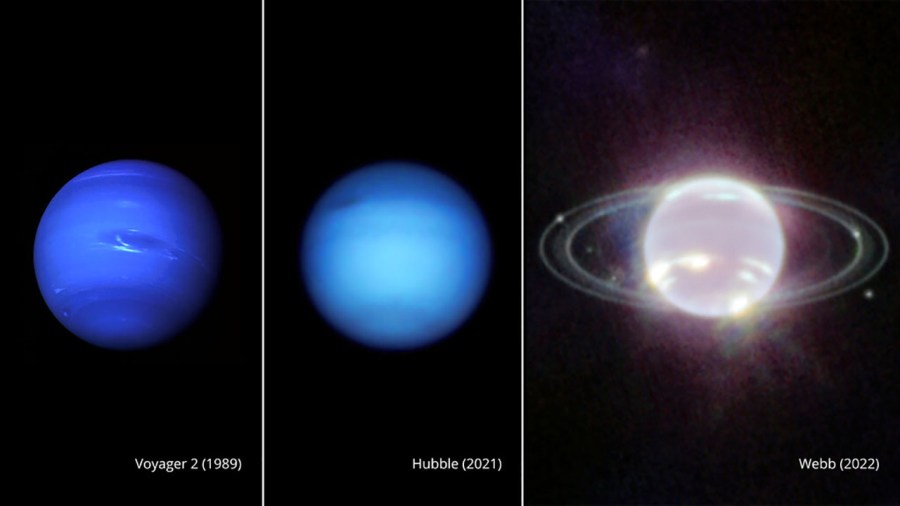PORTLAND, Ore. (KOIN) — NASA has published its first photos of Neptune taken with the James Webb Space Telescope.
The images, Neptune system expert and NASA Interdisciplinary Scientist Heidi Hammel said, offer the clearest look at the planet’s narrow rings and faint dust bands since NASA’s Voyager 2 became the first spacecraft to observe Neptune during its flyby in 1989.
“In addition to several bright, narrow rings, the Webb image clearly shows Neptune’s fainter dust bands,” Hammel said. “It has been three decades since we last saw these faint, dusty rings, and this is the first time we’ve seen them in the infrared.”

The telescope images also show seven of the “ice giant’s” 14 known moons, including Triton, Galatea, Naiad, Thalassa, Despina, Proteus and Larissa. Triton, Neptune’s largest moon, is prominently featured in the photos as a spiky, star-like source of light. The moon’s appearance, NASA says, is caused by a frozen surface of condensed nitrogen, which reflects 70 percent of all sunlight that hits it.
“Neptune has fascinated researchers since its discovery in 1846,” NASA stated in a press release. “Located 30 times farther from the sun than Earth, Neptune orbits in the remote, dark region of the outer solar system. At that extreme distance, the sun is so small and faint that high noon on Neptune is similar to a dim twilight on Earth.”
Unlike the solar system’s “gas giants” Jupiter and Saturn, Neptune is classified as an ice giant. That’s because the chemical composition of Neptune’s interior is rich with elements heavier than hydrogen and helium.
Small amounts of methane gas, NASA says, give Neptune the signature blue color seen in previous photos taken by the Hubble Space Telescope. However, the planet gives off a silvery-white appearance in the new images due to the James Webb telescope’s near-infrared camera, OMSI Director of Space Science Education Jim Todd told KOIN 6.
“Neptune appears as blue taken by the Hubble Space Telescope and Voyagers due to methane in its atmosphere,” Todd said. “The near-infrared wavelengths captured by Webb’s primary imager NIRCam shows the planet as a grayish-white, with icy clouds streaking the surface. The rings are more reflective in the infrared. You can also see the storms from reflective icy clouds in Neptune’s atmosphere.”

